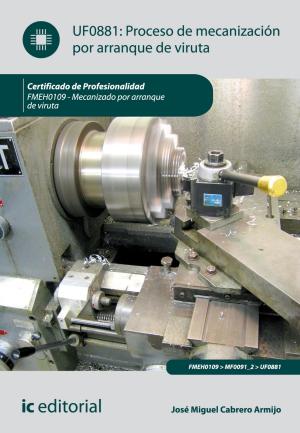Steam Shovels and Steam Shovel Work (Illustrations)
Nonfiction, Science & Nature, Technology, Quality Control, Engineering, Mechanical| Author: | E. A. Hermann | ISBN: | 1230000277305 |
| Publisher: | Engineering News Publishing Co. | Publication: | October 29, 2014 |
| Imprint: | Language: | English |
| Author: | E. A. Hermann |
| ISBN: | 1230000277305 |
| Publisher: | Engineering News Publishing Co. |
| Publication: | October 29, 2014 |
| Imprint: | |
| Language: | English |
Example in this ebook
Part I.—Steam Shovels.
The following article originated in a short paper which was read before a local society of civil engineers, and there were so many requests made for this paper and the illustrations presented with it that the author was led to believe that there was a demand for such information. Believing that a better understanding of the capabilities of these machines will serve a useful purpose in economizing money, time and labor in the execution of work to which they are adapted, the author presents in this article the information learned by a long practical experience in this special class of work. Descriptions of the various steam shovels can readily be found in the trade catalogues of the different manufacturers, but very little has been published on the manner of using them in the execution of different classes of work, and the disposition of the excavated material after it has been loaded on cars or wagons. This part of the subject will receive most attention, and although much of it may seem very elementary to those who have had an extended experience in operating steam shovels, it may be entirely new to the much larger number who have had few or no opportunities for doing work of this kind. It has been the aim of the author to condense the reading matter as much as possible, making it a point to use many illustrations in place of lengthy explanations, thus presenting the subject more clearly than by extended descriptions.
The steam shovel, or steam excavator, is a modified form of dredge adapted for excavating material on dry land. It was designed and patented by a Mr. Otis, about 1840, and like most new inventions the first machine built was a very clumsy affair, but even in this crude state it possessed many advantages for removing large masses of material. Its merits were recognized in its earliest stages, and with increased experience in its operation improvements were soon made which rendered it almost indispensable on all works requiring large quantities of excavation.
It was not until 1865, however, that the machine came into general use. About this time the largely increased railway construction created an active demand for the steam shovel, which demand was quickly supplied by several manufacturers, whose machines vary in distinctive designs of various parts, but the principles of operation are essentially the same in them all.
Types of Steam Shovels.—There are three types of steam shovels: First; machines mounted on trucks of standard gage, transported from place to place in freight trains (or propelled by their own power), and intended for railway work only. Second; machines mounted on wheels of other than standard gage, transported in sections by boat or wagon, or loaded complete on flat cars, and intended for both railway and other work. Third; machines mounted on wheels fitted for transportation over common roads, propelled by their own power, and intended for railway and other work.
To be continue in this ebook...............................................................................................................
Example in this ebook
Part I.—Steam Shovels.
The following article originated in a short paper which was read before a local society of civil engineers, and there were so many requests made for this paper and the illustrations presented with it that the author was led to believe that there was a demand for such information. Believing that a better understanding of the capabilities of these machines will serve a useful purpose in economizing money, time and labor in the execution of work to which they are adapted, the author presents in this article the information learned by a long practical experience in this special class of work. Descriptions of the various steam shovels can readily be found in the trade catalogues of the different manufacturers, but very little has been published on the manner of using them in the execution of different classes of work, and the disposition of the excavated material after it has been loaded on cars or wagons. This part of the subject will receive most attention, and although much of it may seem very elementary to those who have had an extended experience in operating steam shovels, it may be entirely new to the much larger number who have had few or no opportunities for doing work of this kind. It has been the aim of the author to condense the reading matter as much as possible, making it a point to use many illustrations in place of lengthy explanations, thus presenting the subject more clearly than by extended descriptions.
The steam shovel, or steam excavator, is a modified form of dredge adapted for excavating material on dry land. It was designed and patented by a Mr. Otis, about 1840, and like most new inventions the first machine built was a very clumsy affair, but even in this crude state it possessed many advantages for removing large masses of material. Its merits were recognized in its earliest stages, and with increased experience in its operation improvements were soon made which rendered it almost indispensable on all works requiring large quantities of excavation.
It was not until 1865, however, that the machine came into general use. About this time the largely increased railway construction created an active demand for the steam shovel, which demand was quickly supplied by several manufacturers, whose machines vary in distinctive designs of various parts, but the principles of operation are essentially the same in them all.
Types of Steam Shovels.—There are three types of steam shovels: First; machines mounted on trucks of standard gage, transported from place to place in freight trains (or propelled by their own power), and intended for railway work only. Second; machines mounted on wheels of other than standard gage, transported in sections by boat or wagon, or loaded complete on flat cars, and intended for both railway and other work. Third; machines mounted on wheels fitted for transportation over common roads, propelled by their own power, and intended for railway and other work.
To be continue in this ebook...............................................................................................................















